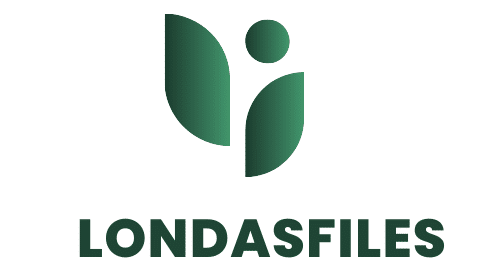What Techniques Can Optimize Energy Usage in UK Data Centers?

In the modern digital age, data centers have become crucial in housing, managing, and disseminating data. They are the heartbeats of virtually every operation, from multinational corporations to small-sized enterprises. In the United Kingdom, data centres are an integral part of the economy, supporting the information and communications technology sector. However, the energy consumption and environmental footprint of these facilities have been a cause for concern. An increase in sustainability and energy efficiency could significantly reduce the power consumption and environmental impact of these centers. This article will explore techniques that can optimize energy usage in UK data centers.
The Importance of Power Usage Effectiveness (PUE) in Data Centers
Understanding Power Usage Effectiveness (PUE) is key to managing and reducing energy usage in data centers. PUE is a ratio that measures the total energy usage of a data center, including all its infrastructures, against that used by the IT equipment alone. A lower PUE score means that less energy is being wasted on non-computing functions such as cooling, which denotes a more efficient data center. In the UK, data center operators have striven to deploy strategies and technologies that can lower their PUE and in turn, reduce their energy consumption.
Have you seen this : What Are the Key Indicators of Success for a UK Business’s Social Media Campaign?
To enhance your PUE, you could use more energy-efficient equipment. For example, replacing old servers with newer models that require less power can help. Moreover, consider deploying more efficient cooling systems. Traditional cooling methods can be energy-devouring, accounting for a significant portion of a data center’s total energy usage. However, newer cooling technologies such as air and liquid cooling systems can reduce energy consumption and improve PUE.
Harnessing Renewable Energy for Data Centers
Renewable energy sources offer an environmentally friendly alternative to traditional power sources for data centers. They not only minimize carbon emissions but also help centers reduce their reliance on non-renewable energy sources. Wind, solar, and hydroelectric energy are among the renewable sources that can be harnessed for data centers.
Have you seen this : How Can Zero-Waste Restaurants in London Innovate to Reduce Food Waste?
UK data centers are progressively integrating renewable energy into their systems due to their environmental and economic benefits. Solar panels can be installed on the facilities’ rooftops to generate energy. Wind turbines can also provide a feasible power source, especially for data centers located in windy regions. Furthermore, hydroelectric energy can be harnessed in centers located near water bodies.
Improving Cooling Efficiency in Data Centers
Cooling is a significant energy consumer in a data center. It ensures that servers and other equipment maintain an optimal temperature, preventing overheating that could lead to system failures. Therefore, improving cooling efficiency is crucial in optimizing energy usage.
One technique to enhance cooling efficiency is the hot and cold aisle arrangement. This involves positioning server racks in alternating rows with cold air intakes facing one aisle and hot air exhausts facing another. This setup minimizes the mixing of cold and hot air, thereby improving cooling efficiency and reducing energy consumption.
Another method is adopting precision cooling. Unlike traditional cooling systems that cool the entire data center, precision cooling targets specific areas that need cooling. Such a system can effectively cool high-density equipment without wasting energy on low-density areas.
Deploying Data Center Infrastructure Management (DCIM) Tools
Data Center Infrastructure Management (DCIM) tools offer a solution for optimizing energy usage in data centers. These tools provide real-time data on the performance of the center’s infrastructure, including power, cooling, and IT systems. They enable data center operators to monitor and manage their facilities’ energy consumption, identify inefficiencies, and implement improvements.
For instance, DCIM tools can help identify underutilized servers, which can then be decommissioned to save energy. They can also aid in balancing workloads across servers to maximize their efficiency. Moreover, these tools can help improve cooling efficiency by identifying hotspots and adjusting cooling resources accordingly.
Optimizing Data Center Design and Layout
An efficient data center design and layout can greatly reduce energy consumption. It involves the strategic placement of equipment and optimization of airflow to enhance cooling efficiency and reduce power usage.
One method is to adopt a modular design. This allows for the addition or removal of modules as needed, making it an efficient and scalable solution. It also minimizes wasted space and allows for more effective cooling, thereby reducing energy usage.
In terms of layout, data centers can adopt the aforementioned hot and cold aisle arrangement. Furthermore, installing blanking panels can prevent the mixing of hot and cold air, improving cooling efficiency. Lastly, raising the floor can allow better airflow and, in turn, enhance cooling efficiency.
Leveraging Virtualization and Server Consolidation
Virtualization is a strategy that allows physical servers to be compartmentalized into multiple virtual servers. This technique can significantly reduce the number of physical servers required in a data center, leading to a reduction in energy consumption. Server consolidation, on the other hand, involves combining underutilized servers into a single or fewer servers.
Through virtualization, a data center can run multiple operating systems and applications simultaneously on a single server. This not only enhances server utilization but also leads to cost savings as the need for additional hardware is reduced. It also means less energy is needed for power and cooling, contributing to energy efficiency.
Server consolidation can significantly decrease energy usage in data centers. By combining lightly used servers, the total number of servers can be reduced, leading to a decrease in power consumption. A decrease in the number of servers also means less cooling is required, further reducing energy usage.
Reducing Carbon Footprint with Efficient Lighting Systems
Lighting in a data center can contribute to its overall energy consumption and carbon footprint. Therefore, adopting energy-efficient lighting systems can help optimize energy usage in data centers. LED lighting, for instance, uses significantly less energy compared to traditional incandescent or fluorescent lights.
Intelligent lighting systems can also be used to reduce energy consumption. These systems use sensors to adjust lighting based on occupancy or time of day, ensuring lights are only on when necessary. This can lead to significant energy savings and a reduction in carbon emissions.
Conclusion
Optimizing energy usage in data centers is an essential strategy for reducing their environmental impact and enhancing sustainability. By implementing measures such as improving PUE, harnessing renewable energy, improving cooling efficiency, deploying DCIM tools, optimizing data center design and layout, leveraging virtualization and server consolidation, and adopting efficient lighting systems, UK data centers can significantly reduce their energy consumption. These strategies not only lead to cost savings but also help in reducing the carbon footprint of these facilities. As the digital age continues to evolve, so too should our commitment to energy efficiency and environmental sustainability in the operation of our data centers.
